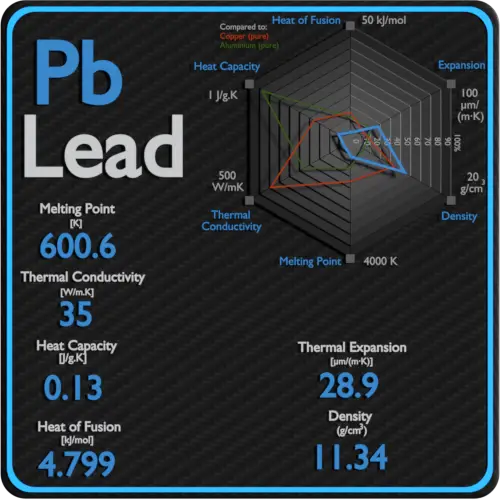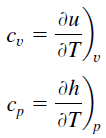About Lead
Lead is a heavy metal that is denser than most common materials. Lead is soft and malleable, and has a relatively low melting point. Lead is widely used as a gamma shield. Major advantage of lead shield is in its compactness due to its higher density. Lead has the highest atomic number of any stable element and concludes three major decay chains of heavier elements.
Lead – Specific Heat, Latent Heat of Fusion, Latent Heat of Vaporization
Specific heat of Lead is 0.13 J/g K.
Heat capacity is an extensive property of matter, meaning it is proportional to the size of the system. Heat capacity C has the unit of energy per degree or energy per kelvin. When expressing the same phenomenon as an intensive property, the heat capacity is divided by the amount of substance, mass, or volume, thus the quantity is independent of the size or extent of the sample.
Latent Heat of Fusion of Lead is 4.799 kJ/mol.
Latent Heat of Vaporization of Lead is 177.7 kJ/mol.
Latent heat is the amount of heat added to or removed from a substance to produce a change in phase. This energy breaks down the intermolecular attractive forces, and also must provide the energy necessary to expand the gas (the pΔV work). When latent heat is added, no temperature change occurs. The enthalpy of vaporization is a function of the pressure at which that transformation takes place.
See also: Mechanical Properties of Lead
Summary
| Element | Lead |
| Specific Heat | 0.13 J/g K |
| Heat of Fusion | 4.799 kJ/mol |
| Heat of Vaporization | 177.7 kJ/mol |
| Density | 11.34 g/cm3 |
Source: www.luciteria.com


















